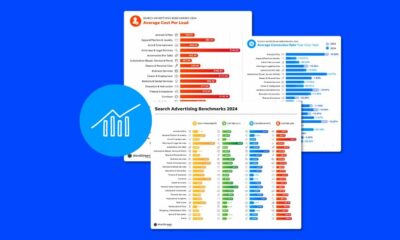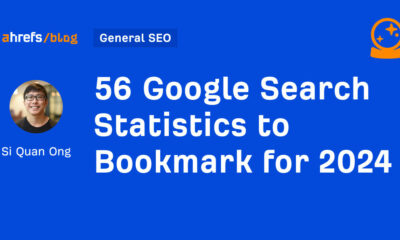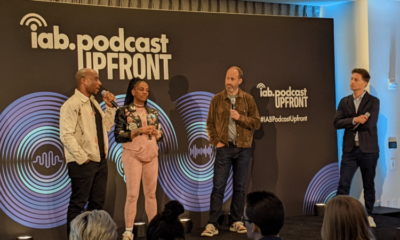SOCIAL
Meta Signs New Deal with Shutterstock Over Usage of Content for AI Creation Tools

With generative AI tools now filtering through the market, you can bet that all the major tech giants are assessing their options on the same, and how they can iterate their own tools to incorporate AI elements, and facilitate new creative options.
And Meta is most definitely among them – today, AdWeek has reported that Meta has struck a new deal with Shutterstock that will enable Meta to utilize Shutterstock’s library of visual and audio content to fuel its AI tools.
As reported by AdWeek:
“Shutterstock says the expanded partnership will allow the two companies to bring new creative offerings to market, build on Shutterstock’s ecosystem to compensate and connect contributors to creators, and enable Meta to use Shutterstock’s expansive content library to develop, evaluate and train its machine learning capabilities.”
That’s an important consideration, because just today, Getty Images has launched legal action against Stability AI, the creator AI art generator ‘Stable Diffusion’, over alleged misuse of its content to fuel Stable Diffusion’s generative models.
If Getty is able to prove its case, that’ll be a significant blow for Stability’s AI tools, as you would assume that it’ll then need to remove all Getty content from its reference material.
It’s impossible to know the full extent of such impacts, but the case does underline the rising demand for more accountability, and compensation for creators, amid the rise of AI tools.
Which is a key focus for Shutterstock.
As explained by Shutterstock CEO Paul Hennessy:
“There are many open questions on the copyright, licensing, rights, and ownership of synthetic content and AI-generated art. We need to do all that we can to not only protect the intellectual property rights of our contributors alongside the advent of this technology, but also ensure that they’re empowered to take advantage of this new creative medium. Simultaneously, we want to provide a platform for our customers to safely use the content they purchase.”
The legal questions around AI content use will become a key point of contention throughout the year, as more content pumped out by these tools makes its way online, and more money starts changing hands based on such creations.
For Meta’s part, it’s keen to bring Shutterstock’s content into its creative tools, aside from AI, with new, integrated options for ads, and other promotional offerings.
But it will also be developing its own AI creation tools.
Meta’s already previewed its initial projects on this front, with tools that can animate kids’ drawings and create short videos based on text prompts. You can bet that Meta’s also working on newer visual models, and added source material from Shutterstock could give it a big advantage.
Shutterstock hosts over a billion images and video clips, and is one of the leading providers of quality stock images on the web. If Meta can arrange exclusive access to that content, that could be a big win, which may help it beat out the competition, depending on next steps.
SOCIAL
Snapchat Explores New Messaging Retention Feature: A Game-Changer or Risky Move?

In a recent announcement, Snapchat revealed a groundbreaking update that challenges its traditional design ethos. The platform is experimenting with an option that allows users to defy the 24-hour auto-delete rule, a feature synonymous with Snapchat’s ephemeral messaging model.
The proposed change aims to introduce a “Never delete” option in messaging retention settings, aligning Snapchat more closely with conventional messaging apps. While this move may blur Snapchat’s distinctive selling point, Snap appears convinced of its necessity.
According to Snap, the decision stems from user feedback and a commitment to innovation based on user needs. The company aims to provide greater flexibility and control over conversations, catering to the preferences of its community.
Currently undergoing trials in select markets, the new feature empowers users to adjust retention settings on a conversation-by-conversation basis. Flexibility remains paramount, with participants able to modify settings within chats and receive in-chat notifications to ensure transparency.
Snapchat underscores that the default auto-delete feature will persist, reinforcing its design philosophy centered on ephemerality. However, with the app gaining traction as a primary messaging platform, the option offers users a means to preserve longer chat histories.
The update marks a pivotal moment for Snapchat, renowned for its disappearing message premise, especially popular among younger demographics. Retaining this focus has been pivotal to Snapchat’s identity, but the shift suggests a broader strategy aimed at diversifying its user base.
This strategy may appeal particularly to older demographics, potentially extending Snapchat’s relevance as users age. By emulating features of conventional messaging platforms, Snapchat seeks to enhance its appeal and broaden its reach.
Yet, the introduction of message retention poses questions about Snapchat’s uniqueness. While addressing user demands, the risk of diluting Snapchat’s distinctiveness looms large.
As Snapchat ventures into uncharted territory, the outcome of this experiment remains uncertain. Will message retention propel Snapchat to new heights, or will it compromise the platform’s uniqueness?
Only time will tell.
SOCIAL
Catering to specific audience boosts your business, says accountant turned coach

While it is tempting to try to appeal to a broad audience, the founder of alcohol-free coaching service Just the Tonic, Sandra Parker, believes the best thing you can do for your business is focus on your niche. Here’s how she did just that.
When running a business, reaching out to as many clients as possible can be tempting. But it also risks making your marketing “too generic,” warns Sandra Parker, the founder of Just The Tonic Coaching.
“From the very start of my business, I knew exactly who I could help and who I couldn’t,” Parker told My Biggest Lessons.
Parker struggled with alcohol dependence as a young professional. Today, her business targets high-achieving individuals who face challenges similar to those she had early in her career.
“I understand their frustrations, I understand their fears, and I understand their coping mechanisms and the stories they’re telling themselves,” Parker said. “Because of that, I’m able to market very effectively, to speak in a language that they understand, and am able to reach them.”Â
“I believe that it’s really important that you know exactly who your customer or your client is, and you target them, and you resist the temptation to make your marketing too generic to try and reach everyone,” she explained.
“If you speak specifically to your target clients, you will reach them, and I believe that’s the way that you’re going to be more successful.
Watch the video for more of Sandra Parker’s biggest lessons.
SOCIAL
Instagram Tests Live-Stream Games to Enhance Engagement

Instagram’s testing out some new options to help spice up your live-streams in the app, with some live broadcasters now able to select a game that they can play with viewers in-stream.
As you can see in these example screens, posted by Ahmed Ghanem, some creators now have the option to play either “This or That”, a question and answer prompt that you can share with your viewers, or “Trivia”, to generate more engagement within your IG live-streams.
That could be a simple way to spark more conversation and interaction, which could then lead into further engagement opportunities from your live audience.
Meta’s been exploring more ways to make live-streaming a bigger consideration for IG creators, with a view to live-streams potentially catching on with more users.
That includes the gradual expansion of its “Stars” live-stream donation program, giving more creators in more regions a means to accept donations from live-stream viewers, while back in December, Instagram also added some new options to make it easier to go live using third-party tools via desktop PCs.
Live streaming has been a major shift in China, where shopping live-streams, in particular, have led to massive opportunities for streaming platforms. They haven’t caught on in the same way in Western regions, but as TikTok and YouTube look to push live-stream adoption, there is still a chance that they will become a much bigger element in future.
Which is why IG is also trying to stay in touch, and add more ways for its creators to engage via streams. Live-stream games is another element within this, which could make this a better community-building, and potentially sales-driving option.
We’ve asked Instagram for more information on this test, and we’ll update this post if/when we hear back.
-

 PPC5 days ago
PPC5 days agoHow the TikTok Algorithm Works in 2024 (+9 Ways to Go Viral)
-

 SEO6 days ago
SEO6 days agoBlog Post Checklist: Check All Prior to Hitting “Publish”
-

 SEO4 days ago
SEO4 days agoHow to Use Keywords for SEO: The Complete Beginner’s Guide
-

 MARKETING5 days ago
MARKETING5 days agoHow To Protect Your People and Brand
-

 PPC6 days ago
PPC6 days agoHow to Craft Compelling Google Ads for eCommerce
-

 SEARCHENGINES6 days ago
SEARCHENGINES6 days agoGoogle Started Enforcing The Site Reputation Abuse Policy
-

 MARKETING4 days ago
MARKETING4 days agoThe Ultimate Guide to Email Marketing
-

 MARKETING6 days ago
MARKETING6 days agoElevating Women in SEO for a More Inclusive Industry
















You must be logged in to post a comment Login